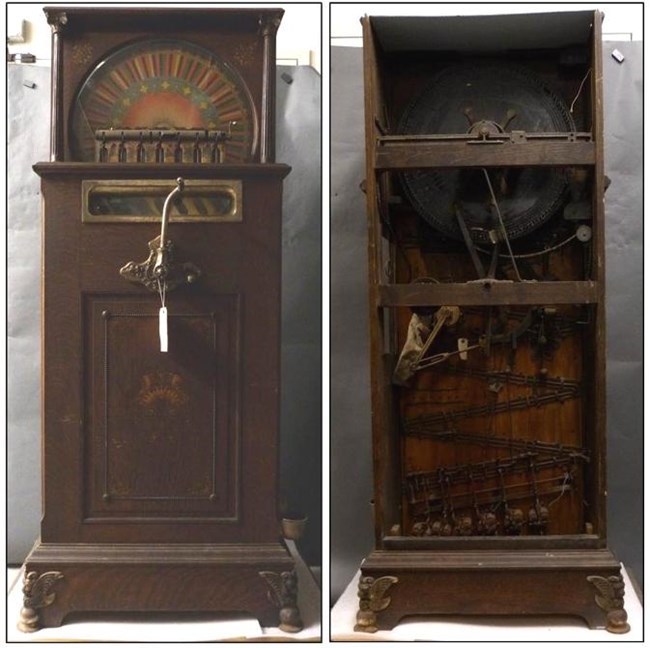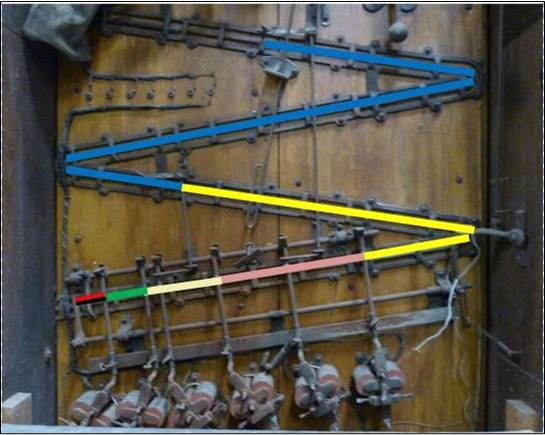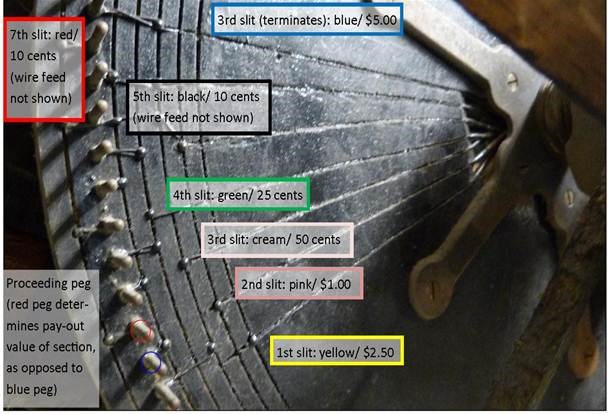
NPS. Artifact: KLGO 55046 An Early Slot MachineOne object from Jeff. Smiths Parlor that may be of mechanical interest is a large, free-standing early slot machine. Its presence in the collection will surprise no one familiar with the numerous gaming establishments in Skagway’s early history. Gaming machines started coming out of San Francisco in the 1890's and before long, Charles Fey had replaced the single wheel with three cylinders, turning it into what we think of as a slot machine today. The gaming machine at the Klondike Gold Rush National Historical Park is what is called a “floor wheel upright” though, so it's beleived to have come from this earlier period of gaming machines. Unfortunately, there is no manufacturer’s name on the machine so its exact history is not known, but there are similar examples made by the Mills Novelty Company between 1897 and 1905, including a game called the “Lone Star”. But on many of these early machines the coin insert was on top, not in front of the wheel, like the Park’s.
One of the most fun aspects of the machine is figuring out how it worked. With the help of our friends over in maintenance again, we began to figure out some of the details about how it worked. The wheel is divided into 138 sections, each in one of seven colors that corresponds to a pay-out value of 10 cents (red and black), 25 cents (green), 50 cents (cream), $1.00 (pink), $2.50 (yellow), or $5.00 (blue). A player would insert a nickel, turn the first handle, and the nickel would drop down into the appropriate color track below. 


|
Last updated: August 23, 2019
